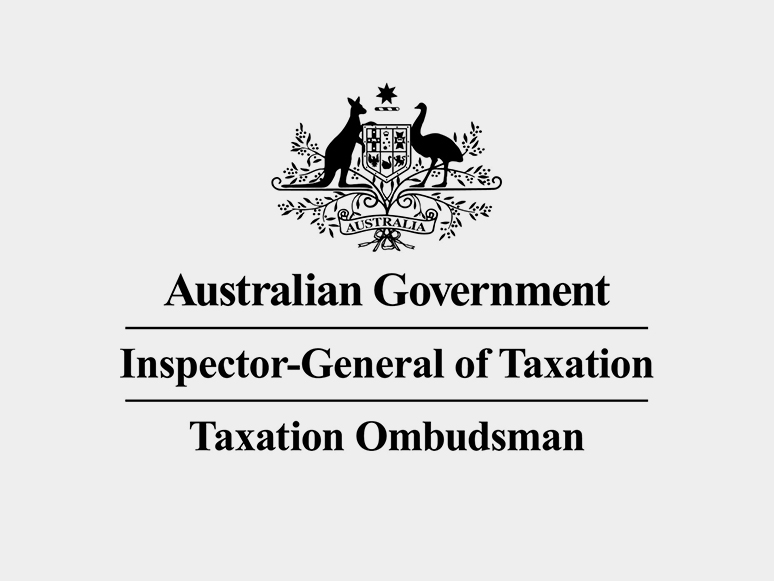logo


19th Dec, 2023

While Single Touch Payroll Phase 2 (STP Phase 2) started on 1 January 2022, many digital service providers have a deferral in place to enable them to transition their customers over time. Under STP Phase 2, businesses report certain information directly to the ATO through their payroll software, such as:
STP Phase 2 doesn’t change which payments employers need to report through STP, but it does change how those amounts need to be reported.
Employers need to take note that STP Phase 2 changes require your input. Carefully review your payroll reporting codes to ensure accurate data submission to the ATO through STP.
You will now start to see BAS data pre-filling by the ATO.It’s important to cross-check the pre-filled information with your payroll records to prove the correct data has been submitted to the ATO and ensure correct withholdings are remitted. Any anomalies you identify may highlight errors in your system configuration.
Don’t forget that when an employee leaves a job, information must be provided in the employer’s STP Phase 2 report, including the employment cessation date and the correct code indicating why the employee left. Details of termination payments must also be reported to the ATO.
19th Dec, 2023

Legislation is currently before Federal Parliament that proposes to allow a deduction of $20,000 (up from
$1,000) for the instant asset write-off of depreciating assets acquired by small business entities in the period from 1 July 2023.These new rules were previously announced by the Federal Government in its May 2023 Federal Budget.
In the period from March 2020, as part of tax relief measures arising out of the COVID-19 pandemic, temporary full expensing of certain depreciation assets allowed many businesses to write off the entire cost of certain assets. The latest Bill proposes that from 1 July 2023, under simplified depreciation rules, depreciating assets costing less than $20,000 (excluding GST), may be immediately deducted, where the asset is first used or ready for use in the year ending 30 June 2024. Note that depreciating assets that are first used or installed ready for use for a taxable purpose on or after 1 July 2024 will be subject to the $1,000 threshold.
The $20,000 threshold will apply on a per-asset basis, so small businesses will be able to instantly write off multiple assets.
The instant asset write-off rules are available to entities that meet the definition of “small business entity” and where the entity carries on a business with an aggregate turnover of less than $10 million.
Connected entities to a small business taxpayer may also need to be considered to qualify for a deduction under the $20,000 instant asset write-off.
Depreciating assets that cost $20,000 or more are allocated to a small business entity general small business pool and can then be deducted at the rates of 15% in the year the asset is allocated to the pool and 30% in subsequent years.
If the balance of a small business entity’s general small business pool is less than $20,000 at the end of the income year ending 30 June 2024, the small business entity will be able to claim a deduction for the entire balance of the pool.
19th Dec, 2023

Treasury has released the Independent Evaluation of the JobKeeper Payment Final Report. The report considers both the impact and processes of JobKeeper. The evaluation assesses the effectiveness of JobKeeper in achieving its objectives, and records lessons learned from the design and implementation of JobKeeper, with a view to informing future policy responses.
JobKeeper was a central pillar of the policy response in Australia to the COVID-19 pandemic. It was a wage subsidy and income support program announced on 30 March 2020, as the third instalment in a series of economic support packages introduced in the space of three weeks. Modifications to policy design, including changes to eligibility criteria and the payment rate and structure, were made following a three-month review. JobKeeper remained in place until 28 March 2021.
The report finds that JobKeeper provided certainty during a crisis, and its take-up was high. It provided support to around four million employees – almost one-third of Australia’s pre-pandemic employment population – and around one million businesses.
Credible estimates suggest that JobKeeper preserved between roughly 300,000 and 800,000 jobs.
With a total cost of $88.8 billion, JobKeeper was the one of the largest fiscal and labour market interventions in Australia’s history. The initial six months of the program cost approximately $70 billion. The first and second three-month extensions cost around $13 billion and $6 billion respectively.
JobKeeper was implemented with incredible speed and was well managed, the report finds. The incidence of fraud was low, and in particular lower than for other ATO-administered programs and taxes such as the cashflow boost, GST tax receipts and large corporate groups income tax.
However, the report says, narrow recipient eligibility and exclusions reduced the effectiveness of JobKeeper and had negative economic consequences.
Exclusions based on employee characteristics such as being a short-term casual or temporary migrant worker compromised the efficacy of JobKeeper and “led to worse outcomes”. In particular, the exclusion of short- term migrants from JobKeeper likely reduced the productive capacity of the Australian economy and constrained recovery in some sectors.
The report states that transparency requirements should be built into policy design to “build public trust and enable appropriate scrutiny of public expenditures”. JobKeeper did not include in its design a public registry or disclosure requirement for entities that received the payment.
JobKeeper was a policy designed for an extraordinary situation. While it was justified during the pandemic, such a policy should be reserved for a macroeconomic crisis and is not appropriate for industry or region- specific shocks or downturns in Australia, the report says.
23rd Oct, 2023

With the cost of living crisis and increase in interest rates hitting Australian households, there is growing evidence that many are falling into financial stress. It is with this background that the Australian Securities and Investments Commission (ASIC) has issued an open letter to various banks, credit institutions, and lenders, calling on them to ensure that their customers have the appropriate level of support.
ASIC has reminded lenders that under s 72 of the National Credit Code, providers must consider varying a customer’s credit contract if they are notified that these credit obligations are unable to be met. Credit providers must also ensure that credit activities authorised by their licence are engaged in efficiently, honestly and fairly. First and foremost, to meet their obligations, lenders must proactively communicate to customers about the circumstances in which they can seek hardship assistance and the options that are available.
Hardship options may be temporary (eg deferring a payment) or permanent (eg setting up a payment plan or altering/varying loan repayments). Applications for financial hardship will usually be required to provide proof of hardship including reasons for the hardship, current income and other major financial expenses, as well as the level of repayments that can be afforded at the current time.
Customers worried that seeking hardship arrangements will permanently affect their future credit scores can rest easy knowing the effects are only temporary. While hardship arrangements for certain credit products such as loans or credit cards can appear in credit reports, the report will only show the months the arrangement is in place, or if the arrangement is permanent, the month the loan is varied, no other details are included and the listing will be deleted after 12 months.
Where a hardship application is granted, lenders should contact customers as the period of assistance comes to an end, to understand their most up-to-date financial circumstance and consider whether further assistance is required. This includes ensuring that customers understand what happens to any arrears that may exist at the end of the hardship assistance period.
Where a customer’s hardship assistance is denied, written reasons must be provided along with other options including making a complaint to the Australian Financial Complaints Authority (AFCA) about the decision.
23rd Oct, 2023

The ATO has advised that new and ongoing subscription costs can also qualify as eligible expenditure for the purposes of the digital adoption boost. This was not specified in the ATO’s original release on the measure.
The additional 20% tax deduction applies to eligible expenditure incurred by small and medium business entities between 7:30 pm AEDT on 29 March 2022 and 30 June 2023. The boost is for business expenses and depreciating assets and is capped at $100,000 of expenditure per income year. Eligible claimants can receive a maximum bonus deduction of $20,000 per income year.
In its latest release, the ATO states that a good rule of thumb is to consider “if the small business would have incurred the expense if they didn’t operate digitally. That is, if they hadn’t sought to adopt digital technologies in the running of their business”.
Using this rule of thumb, the ATO confirms that these costs are eligible:
Whether some expenditure is eligible for the boost will depend on its purpose and its link to digitising the operations of the specific small business. For example, “the cost of a multifunction printer would not be eligible if it were intended to only make copies of paper documents. However, it would be claimable if being used to convert paper documents for digital use and storage”.
Importantly, the ATO states that new and ongoing subscription costs can also qualify as eligible expenditure if it relates to a taxpayer’s digital operations; for example, an ongoing subscription to an accounting software platform for the business would qualify, as would a new subscription for digital content that is used in developing web content to advertise the business.
23rd Oct, 2023

A recent Inspector-General of Taxation and Taxation Ombudsman (IGTO) report has recommended improvements to the small business litigation funding program, aimed at delivering better access to justice and fairness for small businesses.
The original intention of the funding program was to mitigate the disadvantage that small business taxpayers face against the ATO, which is a well-resourced and experienced litigant in proceedings which are often complex and costly.
Taxpayers that are self-represented in the Administrative Appeals Tribunal Small Business Taxation Division in disputes with the Commissioner of Taxation are generally eligible for litigation funding where the ATO engages external legal representation. Eligible small business taxpayers will have reasonable costs of engaging an equivalent level of legal representation covered.
The report from the IGTO was mainly based on two completed dispute investigations, where taxpayers expressed concerns that the ATO had attempted to cap the funding to levels below that necessary to run their matter.
There were also questions as to the ATO’s calculation basis for reimbursements which taxpayers were not made aware of when entering these agreements, and the ATO’s “numerous emails to the taxpayers’ legal representatives questioning the bills which … detracted from case preparation”.
The IGTO notes that without the adoption of its suggested improvements to litigation funding by the ATO, further dispute investigations should be expected. Meanwhile, in response, the ATO considers itself to be no longer bound by the original policy intent of the program, and has continued to confine the findings of the report to the two cases investigated, notwithstanding similar ATO actions and decisions that have been subject to further complaints to the IGTO.
However, it is understood that the ATO does intend to consult with stakeholders before committing to any improvements and that the IGTO recommendations contained in the report will be considered as a part of this process. While changes may not be forthcoming for the small business litigation program, the takeaway for taxpayers is that they can always turn to the IGTO, which provides an independent body to investigate the ATO’s decisions.